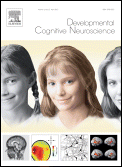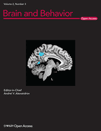
PSYCHOPHYSIOLOGY
Scope & Guideline
Exploring the Mind-Body Connection.
Introduction
Aims and Scopes
- Cognitive and Emotional Processing:
Research exploring how cognitive functions and emotional responses are reflected in physiological measures, such as brain activity and heart rate variability. - Neurophysiological Mechanisms:
Studies investigating the neural correlates of behavior, including the use of EEG, fMRI, and other neuroimaging techniques to understand brain function during different tasks. - Psychophysiological Interventions:
Exploration of interventions aimed at modifying physiological responses through cognitive or behavioral strategies, including mindfulness, exercise, and neurofeedback. - Social and Environmental Influences:
Research examining how social interactions and environmental contexts affect physiological responses and psychological states. - Clinical Applications:
Investigations into the psychophysiological underpinnings of various mental health conditions, including anxiety, depression, and stress-related disorders. - Developmental Psychophysiology:
Studies focusing on how psychophysiological processes develop across the lifespan, including childhood, adolescence, and aging.
Trending and Emerging
- Interoception and Emotion Regulation:
Increasing focus on the role of interoceptive awareness in emotional processing and regulation, exploring how physiological awareness influences emotional experiences. - Neuroscience of Social Interactions:
A growing body of research is dedicated to understanding how social dynamics influence physiological responses, with implications for mental health and well-being. - Machine Learning and Big Data in Psychophysiology:
The integration of machine learning techniques to analyze complex psychophysiological data sets is gaining traction, enabling more nuanced insights into behavior and physiology. - Real-World Applications of Psychophysiological Research:
There is an emerging trend towards applying psychophysiological findings to real-world settings, such as workplace stress management and educational environments, enhancing practical relevance. - Cultural and Contextual Influences:
Research increasingly examines how cultural backgrounds and contextual factors shape psychophysiological responses, providing a more comprehensive understanding of individual differences. - Longitudinal Studies on Psychophysiology:
There is a notable increase in longitudinal research designed to track psychophysiological changes over time, particularly in relation to mental health trajectories and resilience.
Declining or Waning
- Traditional Physiological Measures:
While still relevant, there appears to be a waning emphasis on classic physiological measures alone, such as basic heart rate or skin conductance, without integration with cognitive and emotional assessments. - Overly Narrow Focus on Single Modalities:
There has been a shift away from studies that rely solely on one modality (e.g., EEG or fMRI) in favor of more integrative approaches that combine multiple methods to capture the complexity of psychophysiological phenomena. - Static Models of Psychophysiological Responses:
Research employing static models that do not account for the dynamic nature of psychophysiological responses is becoming less common, as newer methodologies emphasize the importance of temporal dynamics.
Similar Journals

Journal of Integrative Neuroscience
Advancing Neuroscience Through Interdisciplinary InnovationWelcome to the Journal of Integrative Neuroscience, a prominent platform dedicated to advancing the field of neuroscience by fostering interdisciplinary research and innovation. Published by IMR PRESS, this open-access journal has been committed to disseminating high-quality research since its inception in 2002, with a vision to integrate various aspects of neuroscience, from theoretical foundations to applied methodologies, ultimately enhancing our understanding of the brain and nervous system. With an evolving presence in the academic community, the journal holds significant rankings, such as Q2 in Medicine and Q3 in Neuroscience for 2023, reflecting its growing impact and value to researchers and professionals alike. The journal is accessible globally, having adopted an open-access model in 2018, ensuring that vital neuroscience findings reach a broader audience without barriers. Positioned in Singapore and serving an international readership, the Journal of Integrative Neuroscience is your essential resource for the latest insights and discoveries in a rapidly evolving field.

Developmental Cognitive Neuroscience
Unveiling the mysteries of cognitive growth and brain function.Developmental Cognitive Neuroscience is a leading interdisciplinary journal published by ELSEVIER SCI LTD, dedicated to advancing the field of cognitive neuroscience with a specific focus on the developmental aspects of brain function and behavior. Since its inception in 2011, this Open Access journal has continued to thrive, gaining significant recognition with a remarkable impact factor that places it in the Q1 category of cognitive neuroscience, ranking 22nd out of 115 in Scopus. This enhances its visibility and accessibility to a global audience, including researchers, clinicians, and students keen on exploring the intricate relationship between cognitive development and neurological processes. The journal embraces a wide array of topics, from the impact of early life experiences on cognitive outcomes to neurodevelopmental disorders, fostering an enriching platform for disseminating high-quality research and innovative findings. As it progresses towards 2024, Developmental Cognitive Neuroscience remains pivotal in shaping future research and understanding in the field.

Social Cognitive and Affective Neuroscience
Advancing Understanding in Cognitive NeuroscienceSocial Cognitive and Affective Neuroscience, published by Oxford University Press, is a leading academic journal in the fields of cognitive neuroscience and experimental cognitive psychology. With an impact factor placing it in the Q1 category across three disciplines, including medicine, this journal stands at the forefront of research, promoting innovative studies that explore the intricate relationship between social processes and neural mechanisms. Since becoming Open Access in 2017, it has enhanced accessibility for researchers worldwide, facilitating the dissemination and discussion of groundbreaking findings. The journal, which has evolved significantly since its inception in 2006, is ranked among the top 10 in experimental and cognitive psychology and is highly regarded within the cognitive neuroscience community, making it a crucial resource for professionals, academics, and students eager to advance their understanding of the neural substrates underlying social cognition and emotion. The editorial board invites submissions that contribute to the interdisciplinary dialogue surrounding these critical areas of research, ensuring that the journal remains a vital platform for scholarly exchange.

Brain and Behavior
Exploring the Nexus of Neuroscience and Behavior.Brain and Behavior is a premier open-access journal published by WILEY, dedicated to advancing the field of Behavioral Neuroscience. With its ISSN 2162-3279, the journal has established itself as a vital resource for researchers, professionals, and students alike, fostering the dissemination of cutting-edge research since its inception in 2011. Renowned for its rigorous peer-review process, it enjoys a commendable Q2 ranking within the field, reflecting its impactful contributions and relevance in the scientific community. The journal not only emphasizes innovative studies that bridge behavioral science and neuroscience but also serves as a platform for diverse methodologies and interdisciplinary approaches. Accessible [open access](https://onlinelibrary.wiley.com/journal/21623279), Brain and Behavior invites submissions that explore the neural mechanisms underlying behavior, aiming to engage a global audience eager to expand the boundaries of knowledge in this dynamic field. Positioned in the heart of the United States, at 111 River St, Hoboken, NJ, it is strategically placed to collaborate with leading institutions and researchers worldwide.

JOURNAL OF PSYCHOPHYSIOLOGY
Fostering Dialogue in the Realm of PsychophysiologyJOURNAL OF PSYCHOPHYSIOLOGY, published by Hogrefe Publishing Corp, serves as a crucial platform for the dissemination of research in the interdisciplinary fields of neuropsychology, physiological psychology, and neuroscience. With an ISSN of 0269-8803 and an E-ISSN of 2151-2124, this journal has been a staple in the academic community since its inception in 1987 and will continue to publish impactful research until at least 2024. Despite the absence of Open Access, the journal maintains a significant presence, holding Q3 and Q4 quartile rankings in relevant disciplines according to the 2023 metrics. Researchers and practitioners benefit from the journal's robust focus on integrating psychophysiological research with practical applications, contributing to a better understanding of psychological processes through physiological insights. As evident from its Scopus rankings, the JOURNAL OF PSYCHOPHYSIOLOGY is dedicated to fostering scholarly dialogue and advancing knowledge in the field, making it an essential resource for anyone invested in the intricacies of human behavior and the physiological underpinnings thereof.

NEUROPSYCHOLOGY
Enhancing Understanding Through Rigorous ResearchNEUROPSYCHOLOGY, published by the American Psychological Association, is a leading journal dedicated to advancing the field of neuropsychology and physiological psychology. With an ISSN of 0894-4105 and an E-ISSN of 1931-1559, the journal has established itself as a critical resource for researchers, clinicians, and students interested in the intersection of neuroscience and psychological practice. Recognized as a Q1 journal in its category for 2023, it holds a prominent position within the top quartile of neuropsychology journals, reflecting its rigorous peer-review process and high-quality publications. Covering a wide spectrum of topics from cognitive functions and brain-behavior relationships to clinical assessments and interventions, NEUROPSYCHOLOGY plays a pivotal role in disseminating significant research findings that enhance our understanding of the brain's complexities. Although this journal does not currently offer Open Access, it remains highly regarded for its contribution to the scientific community, as evidenced by its strong Scopus ranking of #34/76 in neuropsychology. As it marks over three decades of publication from 1990 to 2024, NEUROPSYCHOLOGY continues to be an essential publication for those committed to exploring and improving the field.

Frontiers in Behavioral Neuroscience
Transforming Behavioral Insights into Neuroscientific Knowledge.Frontiers in Behavioral Neuroscience is a distinguished journal published by FRONTIERS MEDIA SA, specializing in the intricate relationship between behavior and the underlying neural processes. Established in 2007, this Open Access journal, based in Switzerland, aims to disseminate high-quality, peer-reviewed research that spans both Behavioral and Cognitive Neuroscience, as well as Neuropsychology and Physiological Psychology. With an impressive ranking in the top quartiles of these categories—Q2 in Behavioral and Cognitive Neuroscience and Q1 in Neuropsychology—this journal plays a pivotal role in advancing the understanding of complex behavioral phenomena through a neuroscientific lens. The journal's commitment to open accessibility ensures that groundbreaking findings are available to a wide audience, facilitating collaboration and innovation within the scientific community. As the field continues to evolve, Frontiers in Behavioral Neuroscience remains at the forefront, supporting researchers, professionals, and students alike in their pursuit of knowledge and understanding in this dynamic discipline.

Journal of Cognitive Enhancement
Elevating Understanding in Behavioral and Experimental Psychology.Journal of Cognitive Enhancement, published by SpringerNature, is a premier academic platform dedicated to advancing knowledge in the fields of Cognitive Neuroscience, Behavioral Neuroscience, and Experimental Psychology. With an electric combination of rigorous research and innovative practice, this journal has established itself as an essential resource for researchers, professionals, and students interested in understanding the mechanisms behind cognitive enhancement and its implications for mental health and cognitive function. As of 2023, it is recognized in the Q2 and Q3 quartiles across several categories, demonstrating its solid impact in the academic community, particularly with an impressive Scopus ranking of #27/76 in Neuropsychology and Physiological Psychology. Operating in a competitive landscape, the Journal of Cognitive Enhancement fosters open dialogue and collaboration through valuable contributions to cognitive research, facilitating insights that are crucial for practical applications in clinical and educational settings. While specific open access options are currently not defined, we encourage all interested scholars to explore the rich database of published works dating from 2017 to 2024, contributing to this dynamic field of study.

NEUROPSYCHOBIOLOGY
Integrating Perspectives: A Holistic Approach to NeuropsychologyNEUROPSYCHOBIOLOGY, published by KARGER, is a leading academic journal that has been at the forefront of exploring the intricate relationships between neuroscience and psychological processes since its inception in 1975. With both an ISSN of 0302-282X and an E-ISSN of 1423-0224, the journal is renowned for its rigorous peer-reviewed articles and significant contributions to the fields of Biological Psychiatry, Neuropsychology, and Physiological Psychology. Its impact is reflected in its esteemed Scopus rankings, standing out in the 92nd and 81st percentiles in their respective categories. With a commitment to advancing understanding in mental health and neurological science, NEUROPSYCHOBIOLOGY is classified in the Q3 and Q1 quartiles, making it a vital resource for researchers, clinicians, and students alike. Based in Switzerland, the journal embraces a holistic approach to psychological research, bridging gaps between theoretical frameworks and practical applications, thus promoting impactful advancements in the understanding of the human mind.
Explore the latest findings and theories with NEUROPSYCHOBIOLOGY, where your work can contribute to the evolving landscape of neuropsychological studies.

Neuropsychological Trends
Pioneering Insights into Cognitive and Psychological ConditionsNeuropsychological Trends is a prominent, open-access journal published by LED EDIZIONI UNIV, based in Italy. Since its inception in 2007, the journal has dedicated itself to advancing research in the fields of neuropsychology and cellular neuroscience, catering specifically to the evolving trends shaping these disciplines. With the ISSN 1970-321X and an E-ISSN of 1970-3201, the journal provides a platform for multidisciplinary dialogue and exploration of neuropsychological phenomena. While ranked in the fourth quartile for both Cellular and Molecular Neuroscience and Neuropsychology and Physiological Psychology categories in 2023, the journal encourages innovative research that aims to enhance understanding and treatment of cognitive and psychological conditions. The convergence of years from 2011 to 2024 marks a significant period for contributions that inform clinical practice and theoretical frameworks. As researchers, professionals, and students engage with cutting-edge studies and reviews, Neuropsychological Trends serves as a vital resource for staying informed and fostering collaboration in the neuropsychological community.